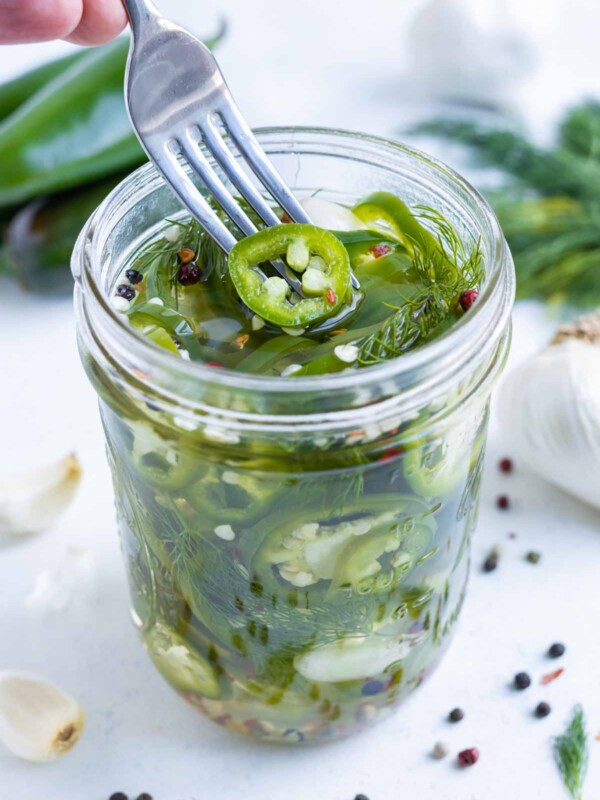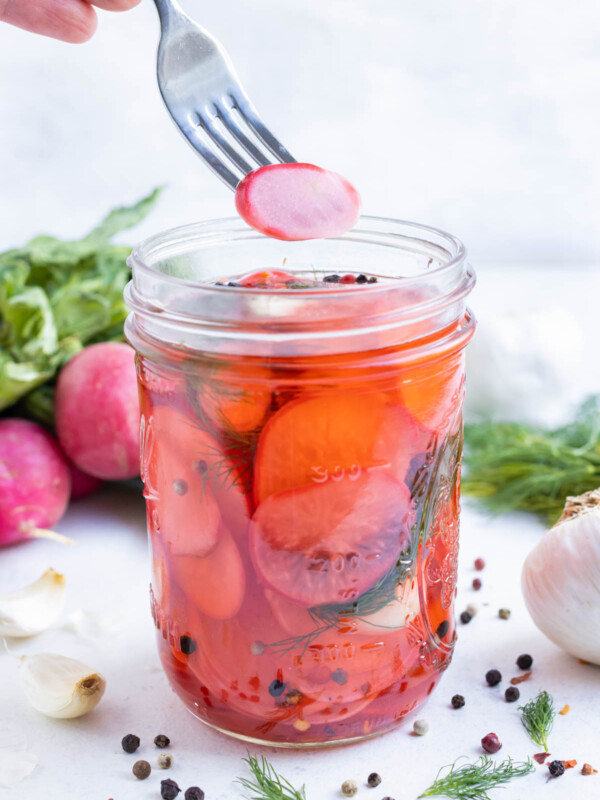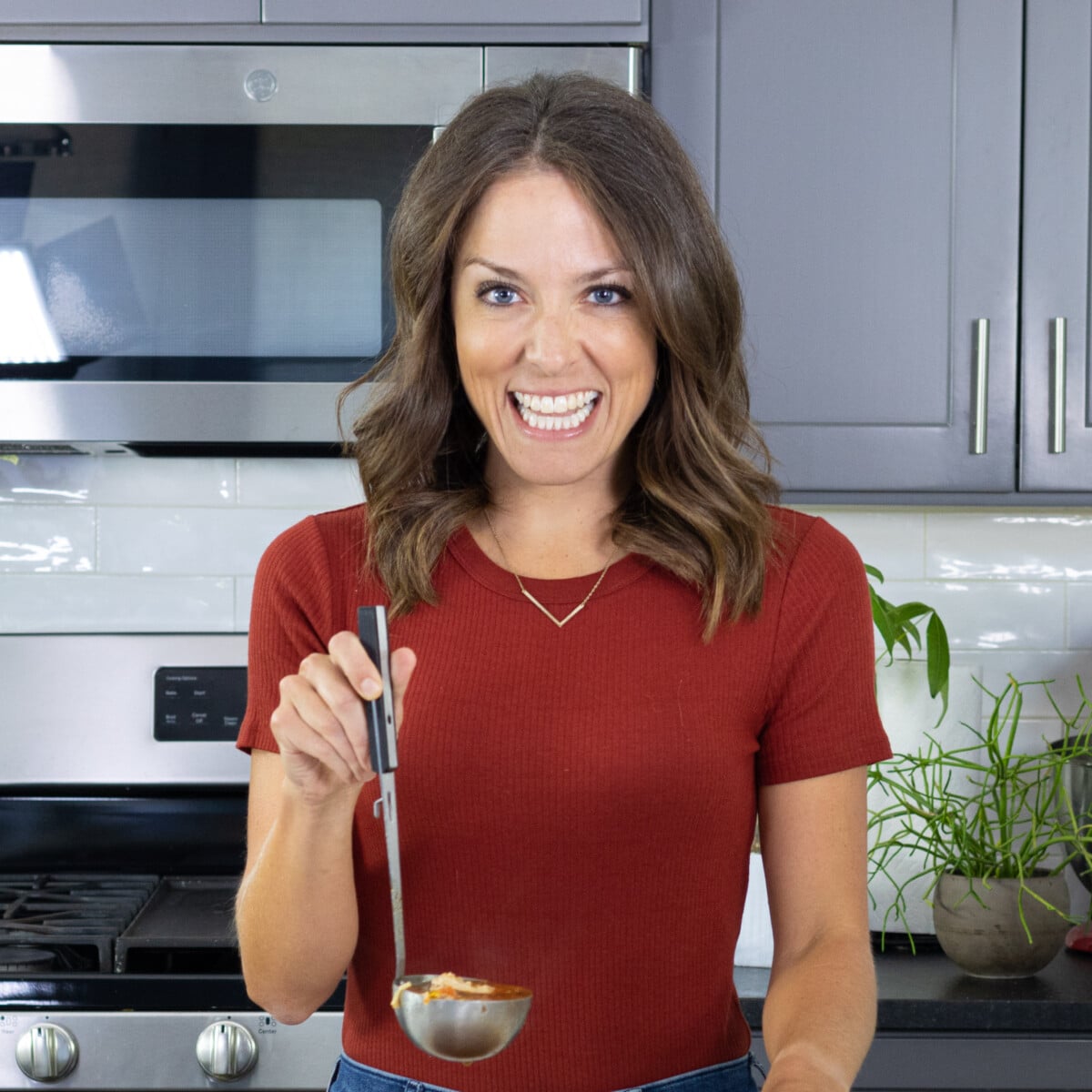Want to learn how to separate egg whites? Whether you’re whipping up merengues or making a low-carb omelette, you have FIVE different methods for getting that egg yolk from the white. You have to try your hand at one of these techniques with the egg recipes at the end of the post!
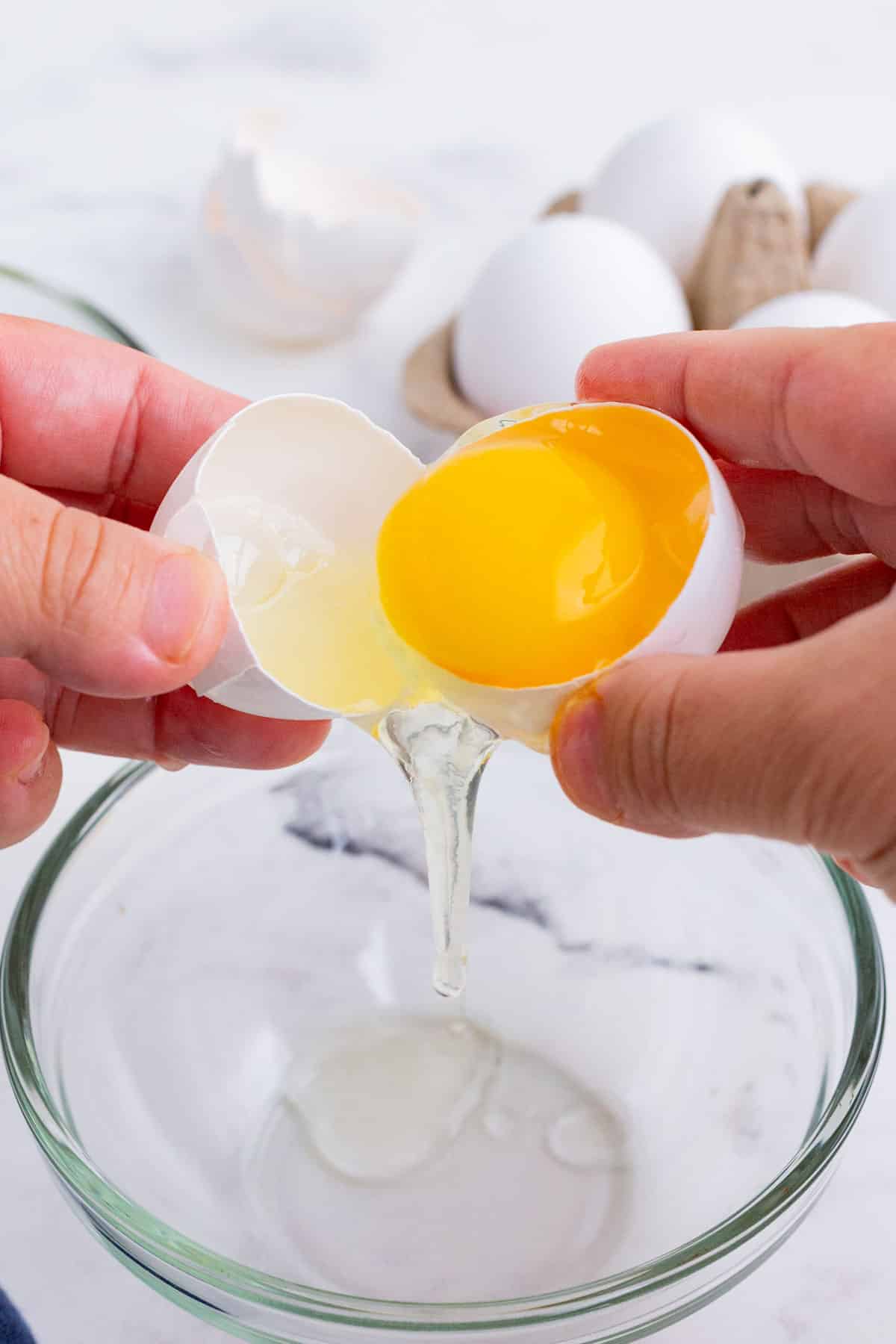
Why is it important to know how to separate egg whites from egg yolks?
It’s important to know how to separate eggs because some baking recipes call for only egg whites, like angel food cake and egg white bites. Other recipes call for an extra egg yolk, like some chocolate chip cookies or carbonara.
If a recipe calls for egg whites, you’ll want to be sure to cleanly separate the white from the yolk. If even the tiniest bit of yolk gets in your egg whites, you won’t be able to achieve stiff peaks, even after several minutes.
You might also want to separate egg whites from yolks for health reasons. Here’s more on the question, Are Egg Whites Healthy?
5 Easy Ways to Separate Egg Whites
There are many different ways you can separate egg whites, and here we’ve laid out 6 methods that you can choose from. They’ll work for any recipe—dessert or otherwise. Plus, they don’t call for any special tools or kitchen gadgets and can be done in under 30 seconds!
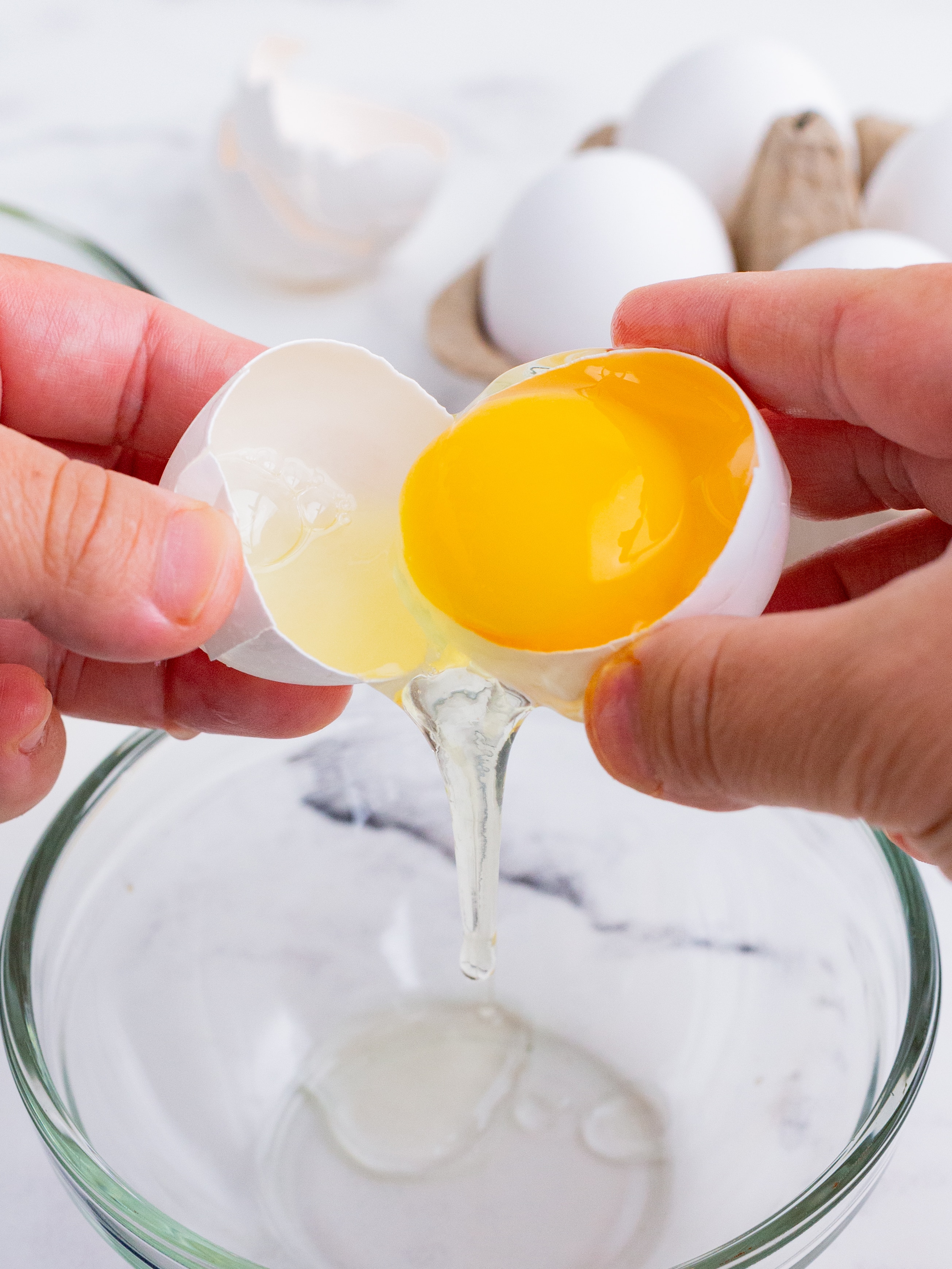
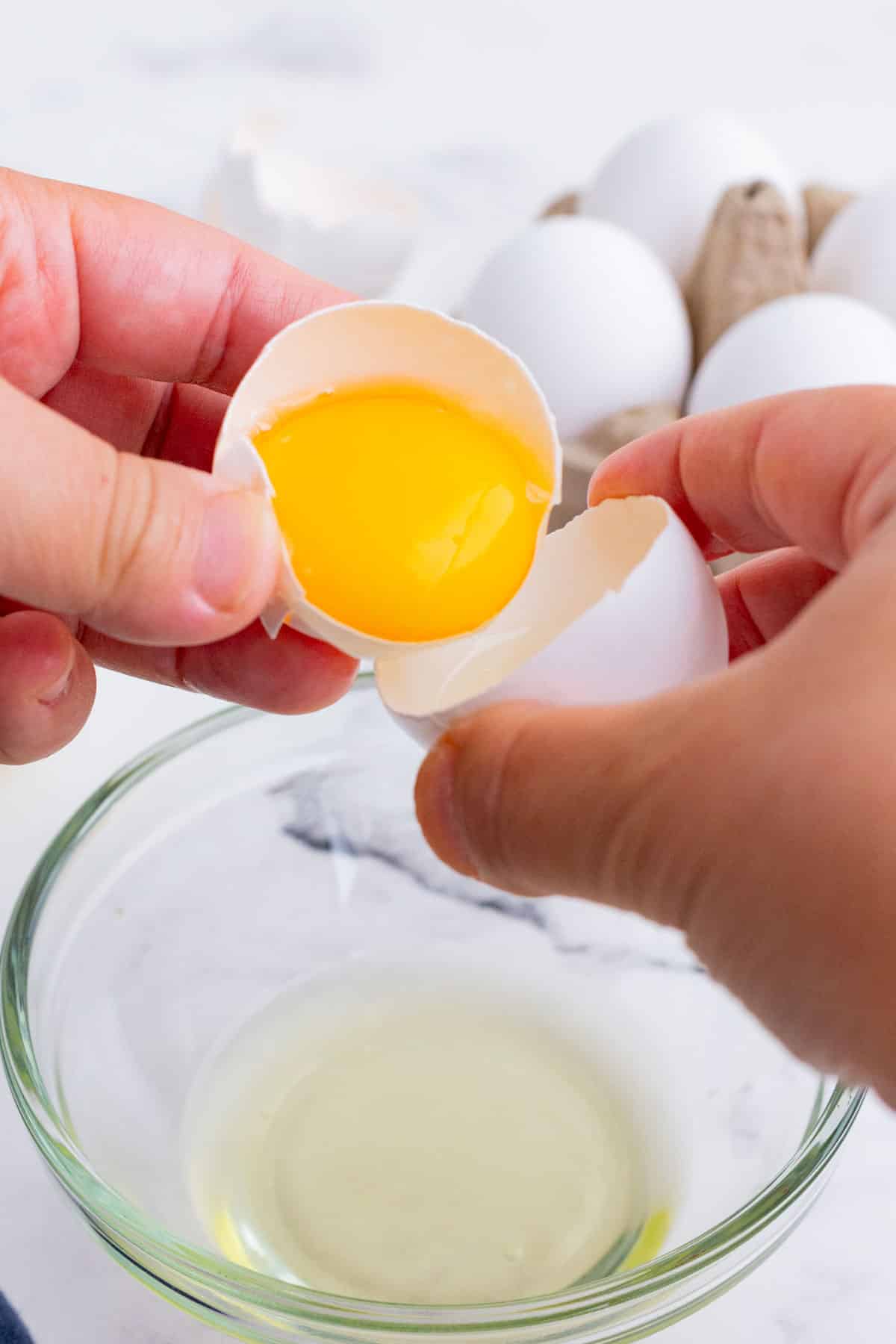
With the Shell Half
This second method is the most common way people separate eggs. Yes, it keeps your hands clean, but the shell can break more than once. If tiny shell bits break into the yolk, it can get into your egg white.
- Place a bowl underneath your hands.
- Crack the egg on a flat surface.
- As you open the egg, catch the yolk in one shell half.
- Toss the egg yolk between each shell half so the white slips from the yolk.
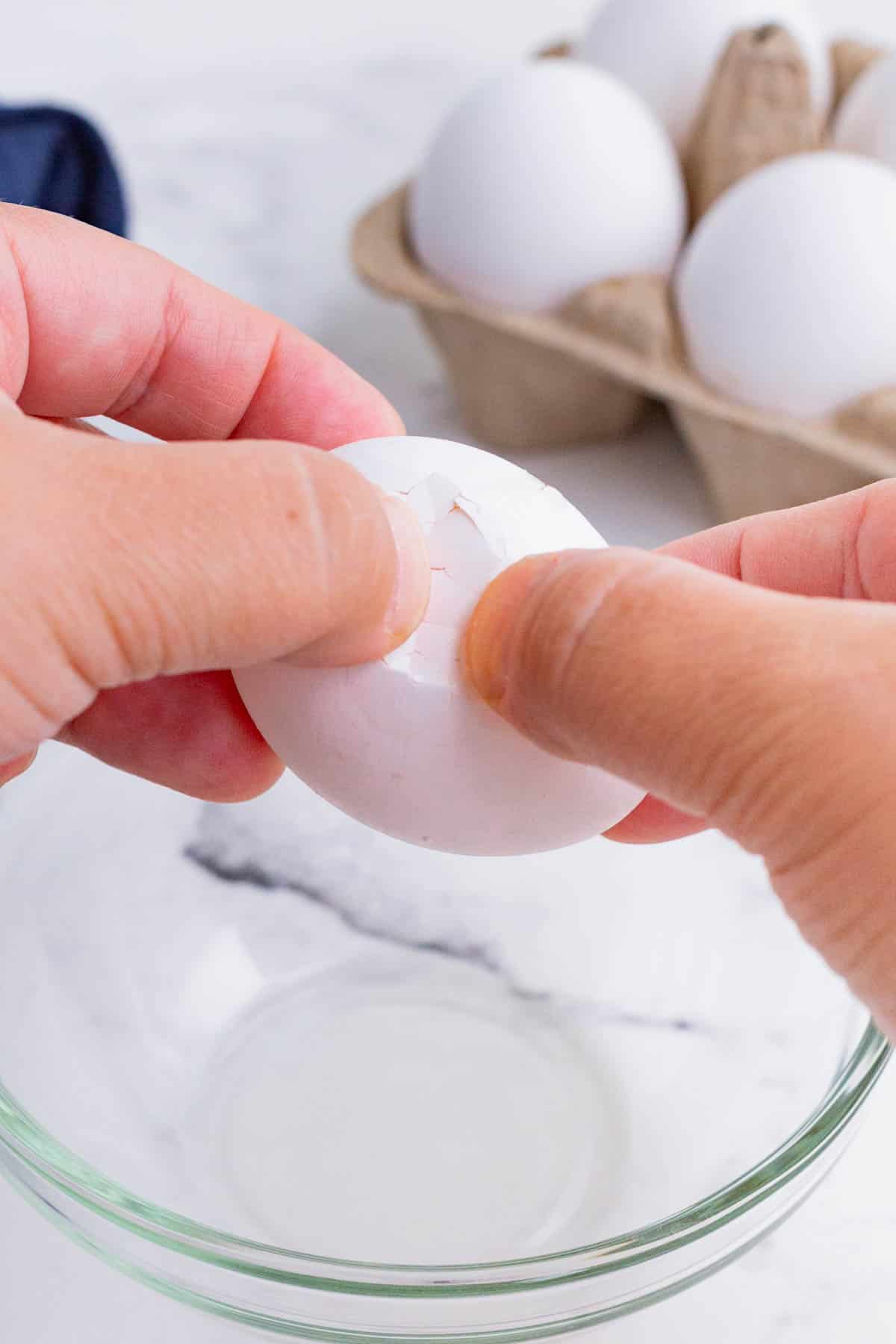
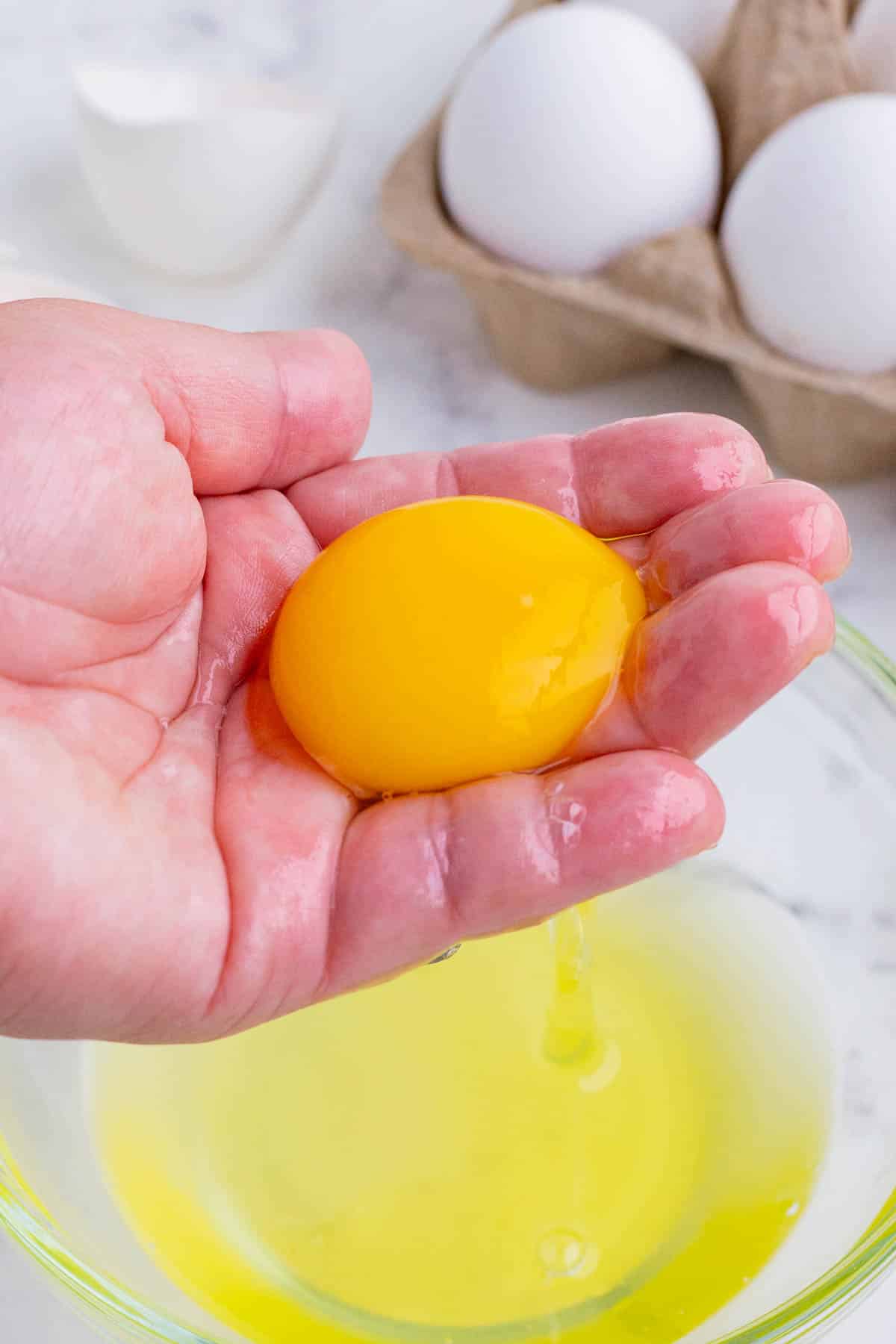
With Your Hands
This first method gives you the most controlled outcome compared to other methods. Make sure you have clean hands, as it’ll get a little messy!
- Place a bowl underneath your hands.
- Crack the egg on a flat surface.
- As you open the egg, catch the yolk in your hand and allow the white to drip through your fingers and into the bowl.
- Toss the yolk between each hand to make sure you have all of the white in the bowl.
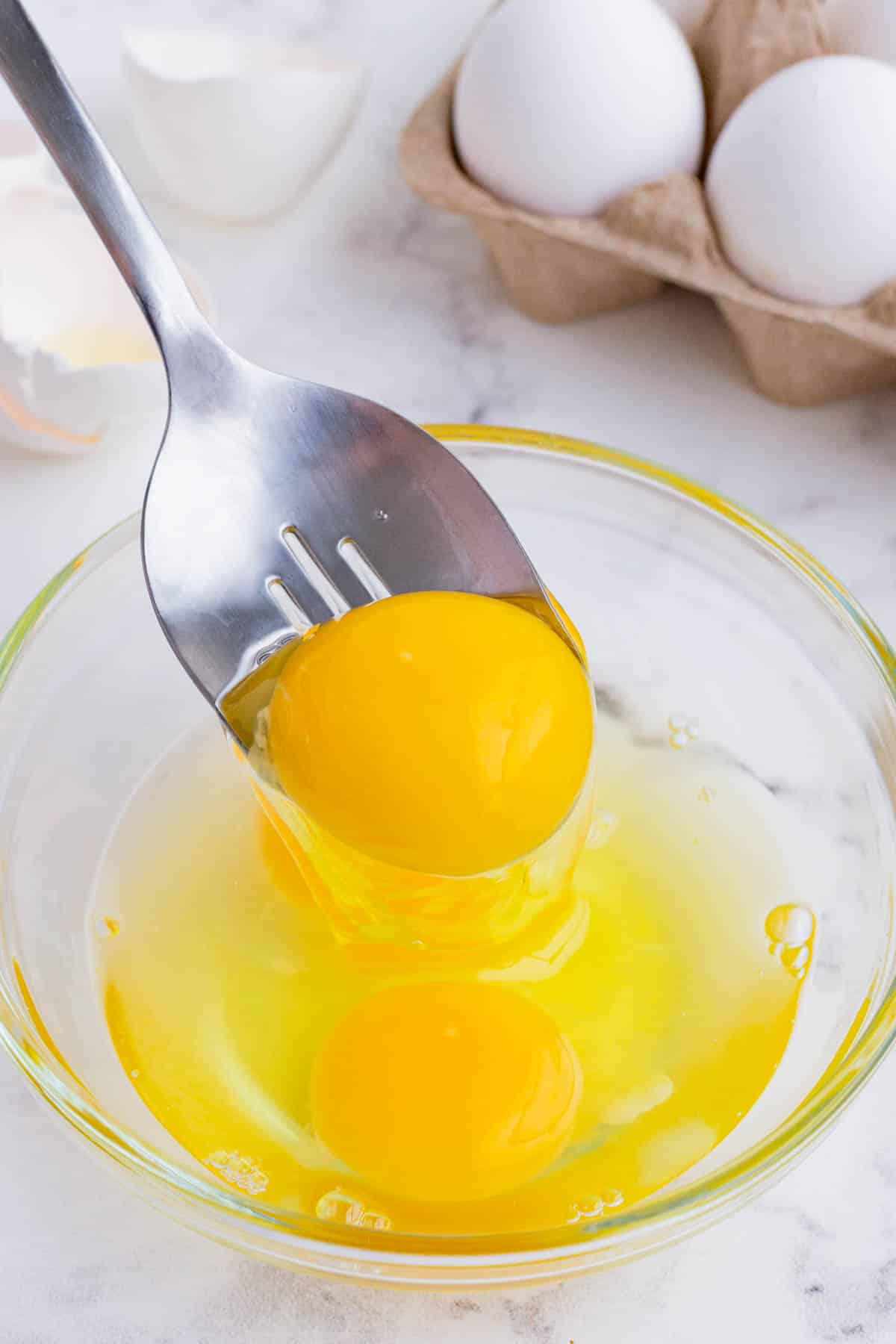
With a Slotted Spoon / Slotted Spatula
This third method is an easy way because you’ll have clean hands, and you’re highly likely to have a slotted spoon or spatula on hand. Some people use an egg separator which is essentially the same thing and not necessary to buy.
- Place a slotted spoon or spatula over a small bowl.
- Crack the egg over the spoon or spatula.
- Pick up the spoon or spatula and gently shake it over the bowl allowing the white fall through the tiny holes.
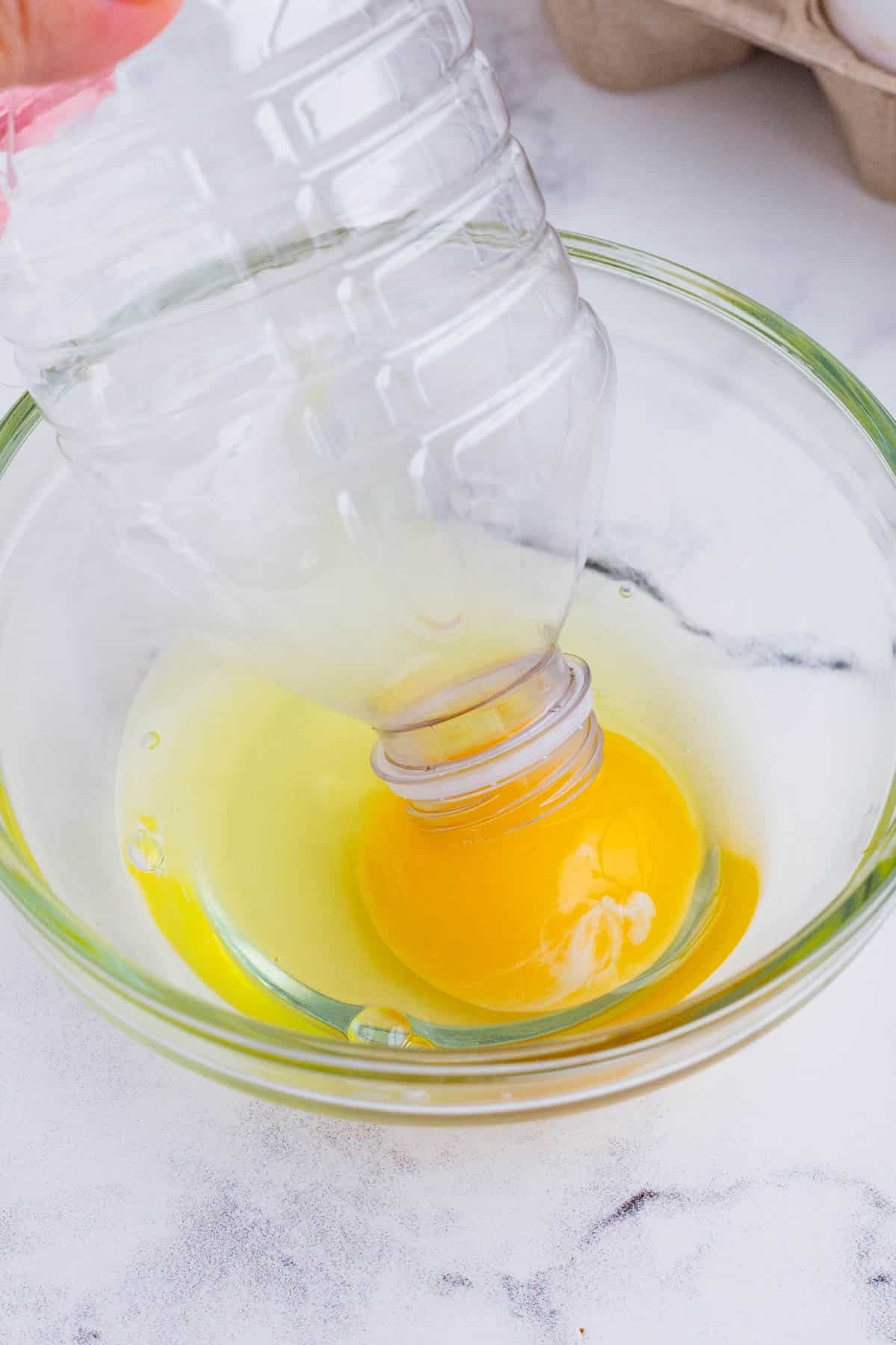
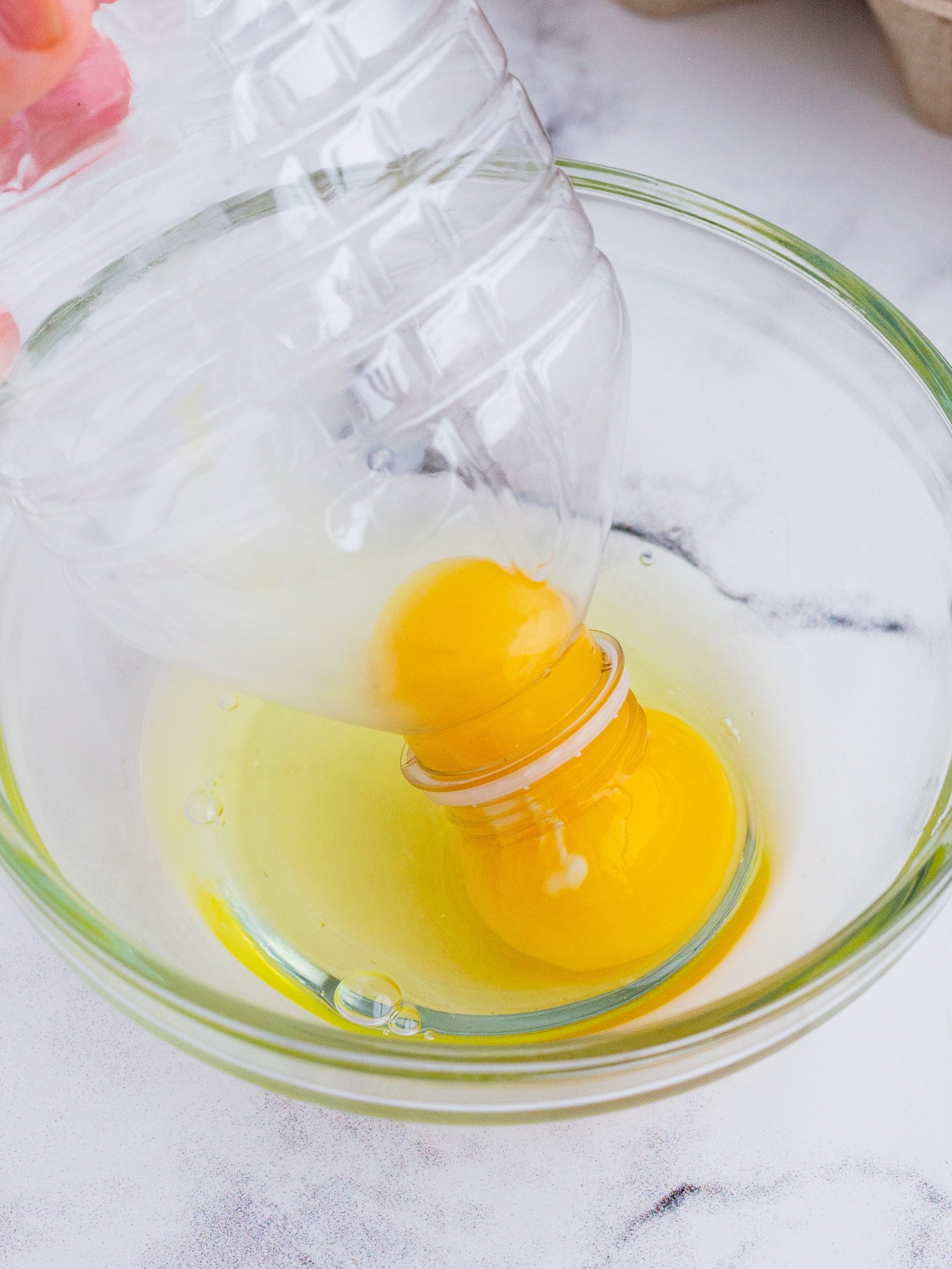
With a Plastic Bottle
A fun way to separate yolks from whites AND store the yolks is by using an empty water bottle. The bottle will suction out the egg yolk (as long as it’s not broken), and you’ll be left with the perfect egg white behind.
- Crack the egg on a flat surface and into a clean bowl.
- Place the mouth of the bottle closely over the yolk.
- Squeeze the bottle, release the suction, and the yolk will slide into the plastic water bottle.
- Either keep the yolk in the bottle or put it in a separate bowl.
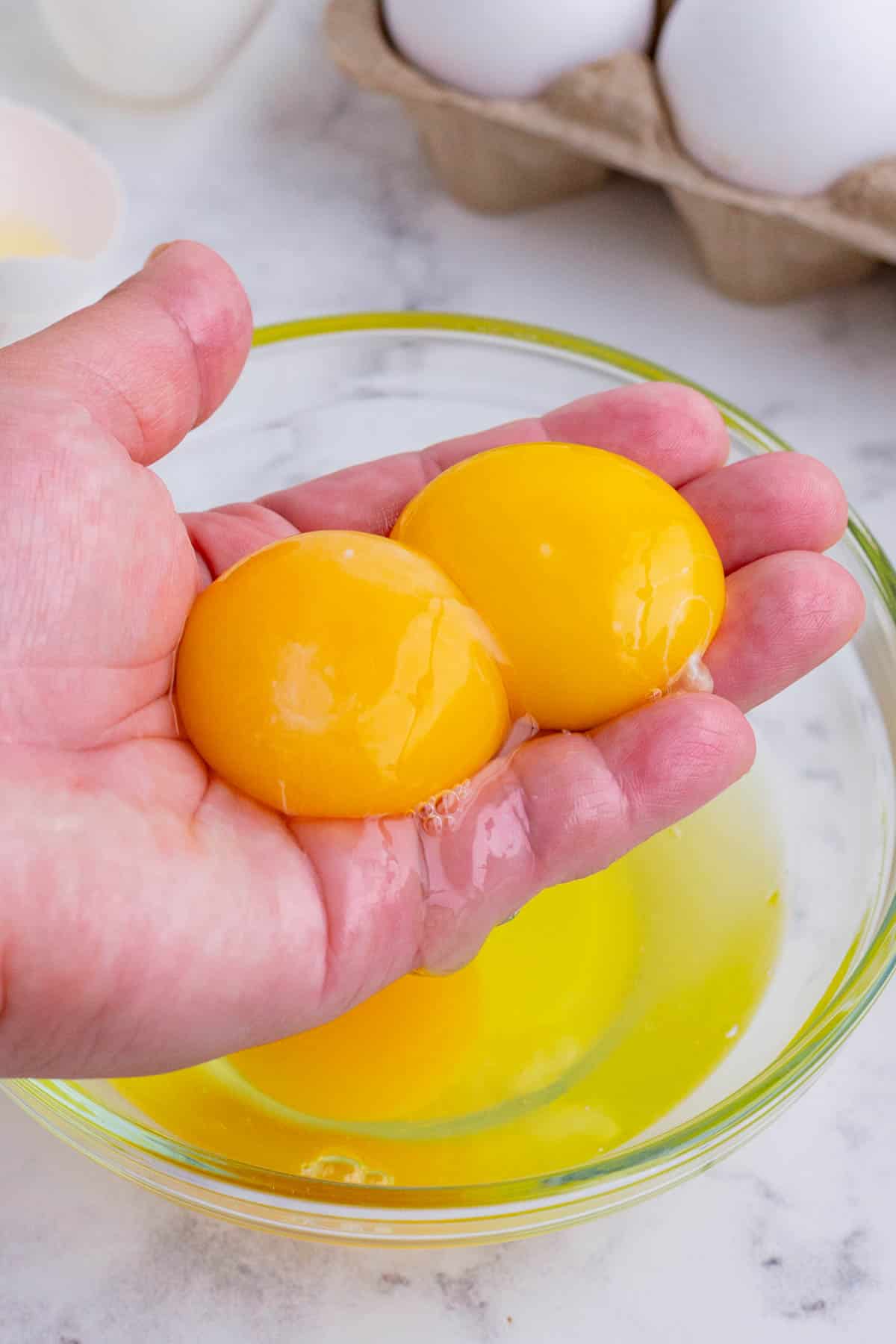
With a Bowl
If you need to separate a lot of eggs at a time, this method with your hand might be quicker and easier for you.
- Crack all eggs on a flat surface and into a large bowl.
- With clean hands, scoop out each egg yolk and place it into a second bowl.
- Slightly spread your fingers apart to make sure all of the white slips out.
- You’ll be left with a big bowl of egg whites ready to use!
Or, you can easily do it with a slotted spoon without a mess using these steps:
- Crack all eggs on a flat surface and into a large bowl.
- Scoop out each egg yolk with a slotted spoon and place it into a second bowl.
- This ensures no speck of yolk will be in your egg whites!
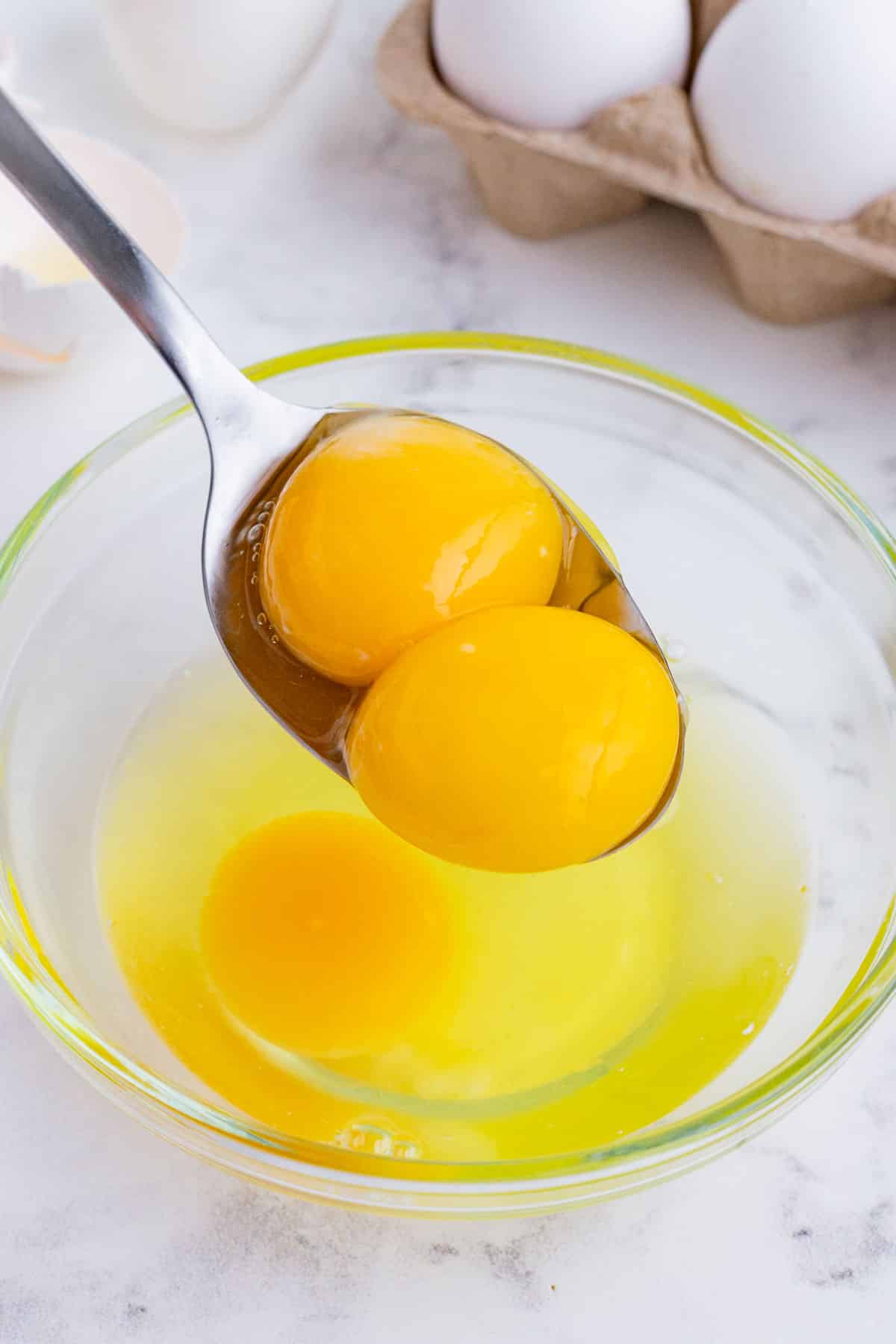
Is it easier to separate cold eggs or room temperature eggs?
It is easier to separate egg whites when they are straight from the fridge. They are sturdier and firmer because the cool temperature keeps the egg whites stiff. Room temperature eggs are looser, and the yolks are more susceptible to break.
Once separated when cold, you can let the eggs get to room temperature in their bowl before using them in your baking recipe.
Can you crack an egg on the side of a bowl?
You can, but cracking your egg on the edge of a bowl might leave bits and pieces of shell in your whites. These tiny shells can puncture the yolk and leave traces of yolks in your egg whites.
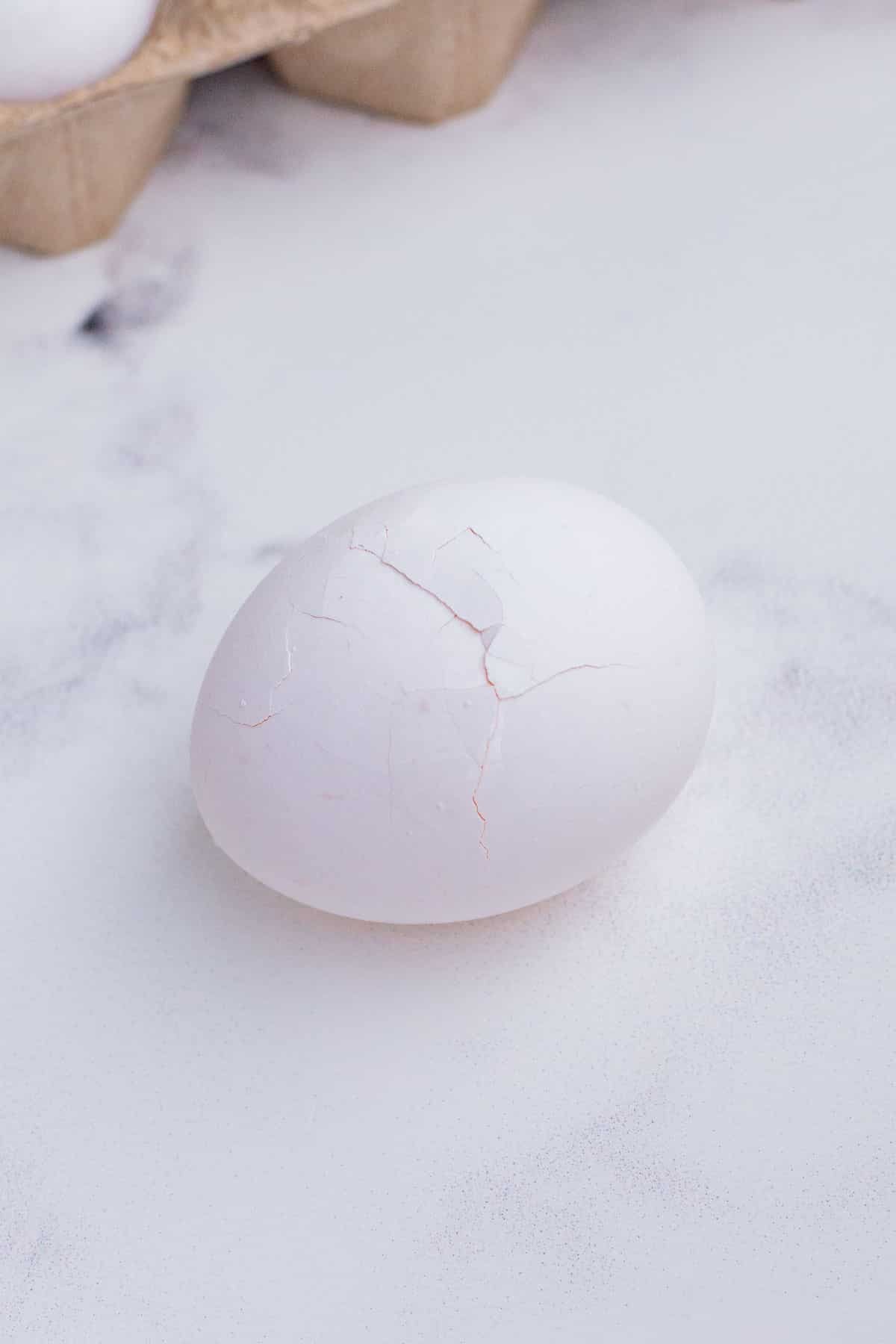
How to Remove Egg Shells
Even if you’re the most skilled egg separator, you might get an egg shell in your raw eggs. Here are 2 simple ways to remove those shells:
- Use halves of the shell to attract the broken pieces.
- Dip a wet finger into the bowl of eggs and fish out the shell.
What to Do with Leftover Egg Yolks & Egg Whites
Don’t throw out any part of the egg that you aren’t using for your current recipe! Simply store them in an airtight container for up to a week in your fridge. They don’t last as long as eggs in their shells (here’s more on how long eggs last), but they’re still worth saving.
What is the stringy white thing in my eggs?
That stringy white thing is called the chalazae, and it’s a thin, rope-like anchor that keeps the yolk in the center of the egg when the egg forms. Chalazae are not egg imperfections, and they disappear as the egg ages. They do not interfere with beating egg whites, and they are not a health threat.
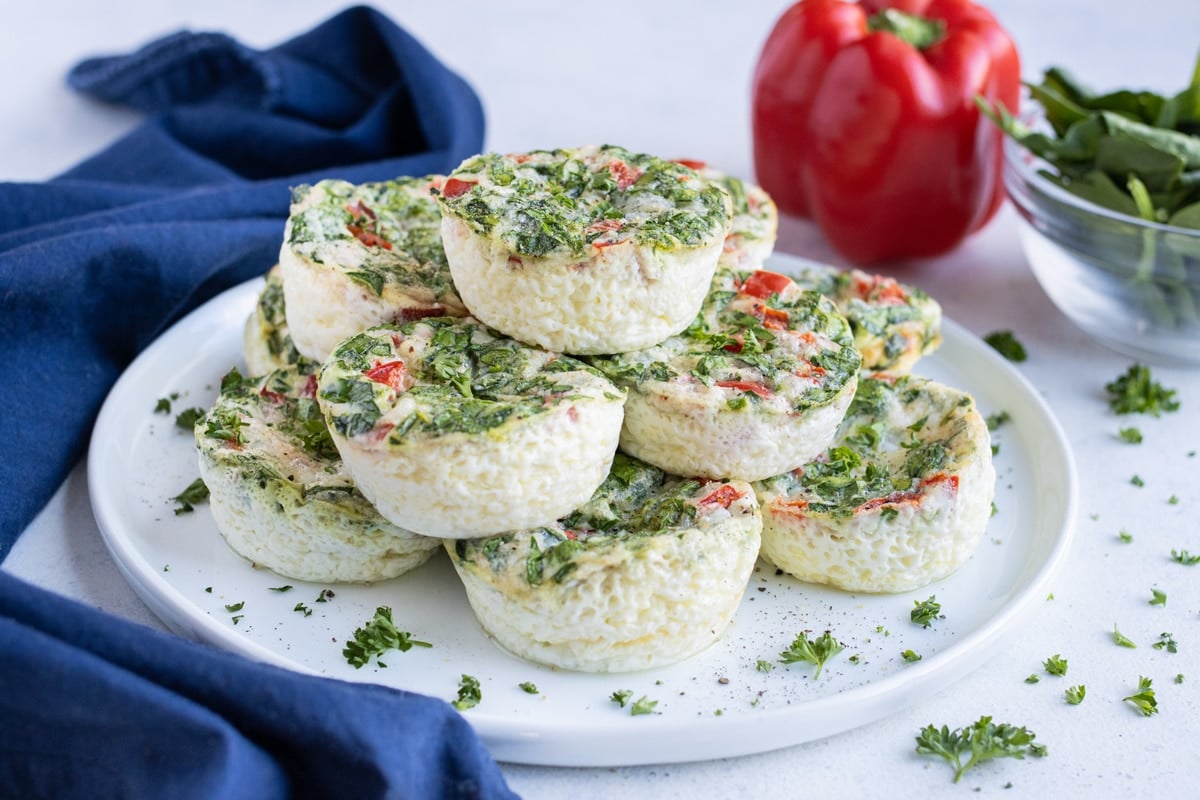
The Best Egg Recipes
Eggs are such a staple in so many recipes, which is why it’s super helpful to know all their tips and tricks. Dig into these posts for everything eggy, from recipes to answers to your most pressing questions!
